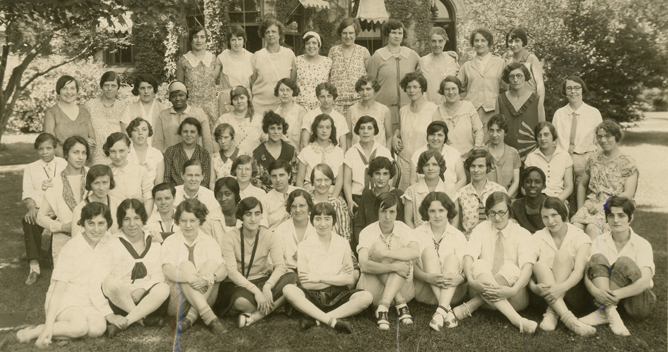Speaker Bio
Dr. Wendy Chmielewski is the George R. Cooley Curator of the Swarthmore College Peace Collection. She has published several works on women in nineteenth and twentieth century social reform movements, including her latest publication (2009), a co-edited volume of scholarly essays: Jane Addams and the Practice of Democracy. In 2011-2012 she was the recipient of a TriCo Digital Humanities grant, on behalf of the Her Hat Was in the Ring project.
Dr. Jill Norgren, professor emerita of political science at John Jay College, and the Graduate Center, the City University of New York, is the author of numerous books and articles. She has published two biographies of Belva Lockwood. Her collective biography of 19th century women lawyers, Rebels at the Bar, will be published in February 2013. She is now writing about trail blazing women lawyers of the 20-21st centuries. Her website is www.JillNorgren.com.
Dr. Kristen Gwinn-Becker, a visiting scholar with the history department at Northwestern University, is the author of Emily Greene Balch: The Long Road to Internationalism, and served as a graduate editorial fellow for The Eleanor Roosevelt Papers: The Human Rights Years, 1945–1948. She believes that utilizing technology to educate one another about history is of vital importance. Gwinn-Becker builds technological components, such as web sites and databases, to further this mission through her consulting agency HistoryIT.
Abstract
In the second half of the nineteenth century and through the first two decades of the twentieth century thousands of women ran for political office on local, state, and national levels throughout the U.S. Due to the principle of federalism, each state decided on voting and electoral rights in their jurisdiction. Thus, prior to 1920 voting rights for women were unevenly applied from state to state. In most women could vote at all. In some states and localities they could vote only for a few offices, such as school board representatives, county officers, and state office holders. In a very few states and territories, where they had been given complete suffrage rights, women could cast ballots for candidates on all levels. Women took up the challenge to run for public office both when they could not vote (relying solely on male voters), and when they finally gained partial or complete suffrage. We estimate that approximately 4,000 women ran in almost 6,000 campaigns by 1920. Currently, our database contains information for 2,300 women, who ran in over 3,000 campaigns.
Using traditional and digital resources the "Her Hat Was in the Ring" project identifies these women candidates providing biographical information for each woman, information about her campaign(s), party affiliation, photographs when available, lists of selected resources, and other aggregate data, via a freely-available, web-based content management system.
Digital History, Digital Sources, Digital Display: The Her Hat Was in the Ring Project on U.S. Women Who Ran for Political Office Before 1920
In the second half of the nineteenth century and through the first two decades of the twentieth century thousands of women ran for political office on local, state, and national levels throughout the U.S. Due to the principle of federalism, each state decided on voting and electoral rights in their jurisdiction. Thus, prior to 1920 voting rights for women were unevenly applied from state to state. In most women could vote at all. In some states and localities they could vote only for a few offices, such as school board representatives, county officers, and state office holders. In a very few states and territories, where they had been given complete suffrage rights, women could cast ballots for candidates on all levels. Women took up the challenge to run for public office both when they could not vote (relying solely on male voters), and when they finally gained partial or complete suffrage. We estimate that approximately 4,000 women ran in almost 6,000 campaigns by 1920. Currently, our database contains information for 2,300 women, who ran in over 3,000 campaigns.
Using traditional and digital resources the "Her Hat Was in the Ring" project identifies these women candidates providing biographical information for each woman, information about her campaign(s), party affiliation, photographs when available, lists of selected resources, and other aggregate data, via a freely-available, web-based content management system.
